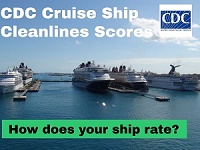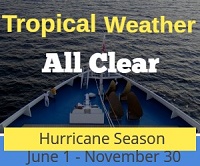Cruise News Headlines
Cruise Line Safety Measures
Venice
Get to know our slice of Paradise - located on the SW Coast of Fl.
Attractions
Beaches
Canoe/Kayak
Boat Launches
Boat Charters
Fishing Charter
Fishing Piers
Historical Sites
Golf
Parks
Hotels
Relocate
Venice Map
Cruise Industry Adopts Three New Safety Measures
November 15, 2012
On behalf of the global cruise industry, Cruise Lines International Association (CLIA) and the European Cruise Council (ECC) today announced that the cruise industry has adopted three additional safety policies. These policies address issues related to lifejacket stowage on newly-constructed ships, the securing of heavy objects onboard ships, and the synchronization of bridge operating procedures within commonly owned and operated fleets. These policies exceed current international regulatory requirements and are further outcomes of the Cruise Industry Operational Safety Review, which was launched in January 2012.
Issue 1: No lifejackets available to passengers except the jackets located in their stateroom (during the Costa Concordia tragedy many guests were not in their staterooms at the time of the incident and passengers in lower deck cabins may have drowned trying to get their lifejackets.)
Policy: Oceangoing cruise lines of CLIA and the ECC will carry additional adult lifejackets onboard so that the number of lifejackets carried far exceeds the number of persons actually onboard the ship. Cruise lines agree to have lifejackets in close proximity to either muster stations or lifeboat embarkations points on newly-constructed ships. Consequently, lifejackets will be readily accessible by crewmembers for distribution to passengers in the event of an emergency.
Issue 2: Heavy, unsecured objects are dangerous.
Policy: Oceangoing member lines of CLIA and the ECC have procedures in their Safety Management Systems to secure heavy objects either permanently, when not in use, or during severe weather. Heavy objects, if not properly secured, have the potential to cause injury. Member lines will perform ship-wide inspections to ensure heavy objects are properly secured. For example, heavy objects include items such as pianos, televisions, treadmills and laundry equipment.
Issue 3: No consistent standard operating procedures.
Policy:
The Harmonization of Bridge Procedures policy helps to enhance operational safety within CLIA and ECC oceangoing member lines by achieving consistency in operating procedures within individual companies and among brands within a commonly owned and operated fleet.
The Cruise Industry Operational Safety Review receives advice and input from a panel of outside maritime and safety experts. These individuals are evaluating suggested policy improvements as part of the cruise industry’s continuous efforts to review and improve safety measures by developing comprehensive best practices for industry-wide implementation and, ultimately, formal submission to the International Maritime Organization, as appropriate.
A full version of the Location on Lifejacket Stowage policy is online at http://www.cruising.org/regulatory/lifejacket-stowage.
A full version of the Securing Heavy Objects policy can be accessed at http://www.cruising.org/regulatory/heavy-objects.
The Harmonization of Bridge Procedures policy is available at http://www.cruising.org/regulatory/bridge-procedures.
All CLIA policies can be viewed at http://cruising.org/regulatory/cruise-industry-policies.
CLIA announced the launch of the Review on January 27, 2012. As part of the Review, in February, the global cruise industry instituted a new policy requiring mandatory emergency muster drills for embarking passengers prior to departure from port.
In March, the industry put forth recommendations to the IMO supporting enhanced reporting requirements to improve the consistency and transparency of marine casualty data.
In April, it announced three policies addressing issues related to passage planning, personnel access to the bridge and lifejackets.
In June, the global cruise industry announced policies related to the recording of passenger nationality and the common elements of musters and emergency instructions.
In September the industry announced a policy regarding lifeboat loading for crew training purposes.
Additional best practices and policies developed through the Cruise Industry Operational Safety Review will be announced and implemented on an ongoing basis.
The European Cruise Council
The European Cruise Council (ECC) represents the leading cruise companies operating in Europe and has 30 cruise members and 34 associate members. The ECC promotes the interests of cruise ship operators within Europe, liaising closely with the EU Institutions: the Commission, the Parliament, the Council of Ministers and their Permanent Representatives as well as with the European Maritime Safety Agency (EMSA). www.europeancruisecouncil.com.
The CLIA
The nonprofit Cruise Lines International Association (CLIA) is North America's largest global cruise industry organization. CLIA represents the interests of 26 member lines, 15,000 travel agents, and 120 executive partners before regulatory and legislative policy makers, supporting measures that foster a safe, secure and healthy cruise ship environment. CLIA is also engaged in travel agent training, research and marketing communications to promote the value and desirability of cruise vacations with thousands of travel agency and travel agent members across North America. For more information, visit www.cruising.org.







